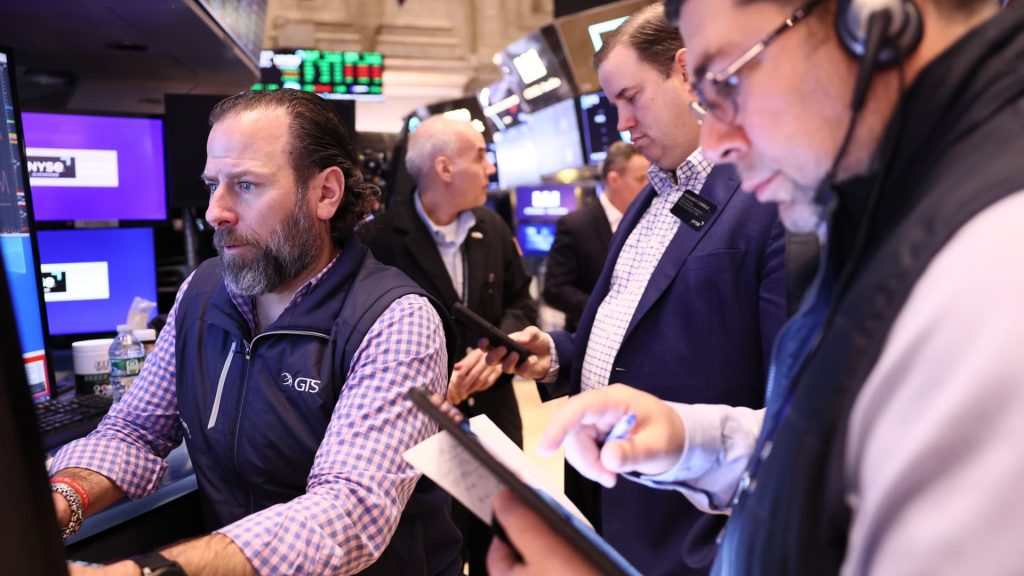In the face of ongoing uncertainty surrounding tariffs, the market sell-off in U.S. equities is far from over, warns Deutsche Bank’s chief strategist, Binky Chadha. In a recent assessment, Chadha anticipates a continued decline in consumer and corporate confidence, predicting that the S&P 500 could drop significantly unless trade policy uncertainties are resolved. Despite these challenges, he remains cautiously optimistic about a potential rebound later this year if the situation stabilizes.
| Article Subheadings |
|---|
| 1) Understanding the Market Sell-off |
| 2) The Role of Tariff Uncertainty |
| 3) The Outlook for the S&P 500 |
| 4) Consumer Confidence and Economic Indicators |
| 5) Future Predictions and Recovery Strategies |
Understanding the Market Sell-off
The recent downturn in the U.S. stock market marks a significant shift from the bullish momentum that characterized the previous months. According to Binky Chadha from Deutsche Bank, the sell-off is indicative of deeper underlying issues within financial markets. Enhancing this narrative, Chadha emphasizes that the decline is not merely a transient event but part of a larger market recalibration as companies prepare for potential economic headwinds.
Many investors have expressed concerns about the sustainability of recent highs in the stock market, particularly as corporate earnings reports begin to reflect tightening budgets and reduced forecasts. The sentiment has shifted, suggesting a reevaluation of risk appetite among investors, which could lead to further market adjustments. Heightened volatility has caused many to reassess their portfolios, preparing for an unpredictable landscape driven by both domestic and international pressures.
The Role of Tariff Uncertainty
Tariff policies have become a focal point of concern among market analysts. As negotiations and discussions about tariffs unfold, uncertainties loom large over corporate profitability and consumer spending. Chadha highlights that as the trade policy remains unresolved, market participants are likely to experience ongoing apprehension, forcing them to reassess their strategic positions.
The implications of tariff changes extend beyond the surface, affecting supply chains, pricing strategies, and ultimately consumer prices. Businesses may be compelled to raise prices for consumers or cut back on investments that stimulate growth due to the unstable outlook created by tariff fluctuations. This uncertainty further feeds into market volatility, exacerbating the already tense financial climate.
The Outlook for the S&P 500
According to Chadha, the S&P 500 may see a significant drop unless conditions improve. Specifically, he pointed out that the index could potentially fall to 5250, representing a 6.9% decline from its previous closing level of 5,638.94. This stark projection sends ripples through the marketplace, as many investors are keenly aware of historic patterns demonstrated during previous trade wars.
Chadha remains cautious, suggesting it’s too early for investors to abandon hope entirely. He maintains a year-end target of 7,000 for the S&P 500, emphasizing that a resolution to the tariff issues could spark a sharp recovery in the latter half of the year. “For now, we maintain our year-end target,” he stated, underscoring the potential for stocks to rebound given the right catalysts.
Consumer Confidence and Economic Indicators
Consumer sentiment plays a vital role in shaping market trajectories, especially during periods of financial uncertainty. The recent reports indicate that while consumers are still spending, it’s at a slower pace than anticipated. Chadha points out that this slowing trend could have further implications for economic growth, potentially placing additional pressure on corporate earnings.
As consumer confidence wanes, companies are responding by cutting back on capital expenditures, which directly impacts their ability to innovate and expand. This adjustment contributes to a broader narrative of caution among executives, with many bracing for potentially challenging economic conditions as tariff uncertainties continue to influence both domestic and international markets.
Future Predictions and Recovery Strategies
Navigating through this volatile environment requires adaptive strategies from corporate leaders and investors alike. Chadha suggests that the administration’s response, particularly concerning tariffs, will be crucial in determining the future direction of the market. He posits that significant changes in the administration’s approach may only occur in response to declining approval ratings and evident economic distress.
Chadha highlights that the historic link between declining approval ratings and policy shifts could eventually prompt a reassessment of the current tariff strategy, leading to potential stabilization in the marketplace. However, until then, the outlook remains precarious, and adaptability will be key.
| No. | Key Points |
|---|---|
| 1 | The market sell-off is attributed to tariff uncertainties and declining confidence. |
| 2 | Market forecasts indicate the S&P 500 could decline further amid economic concerns. |
| 3 | Chadha maintains a year-end S&P 500 target of 7,000, suggesting potential market rallies. |
| 4 | Consumer spending is slowing, which can negatively impact corporate earnings. |
| 5 | Policy response from the administration will be critical to market recovery. |
Summary
The current market climate reflects a deep-seated anxiety surrounding unresolved tariff policies, resulting in declining consumer and corporate confidence. As analysts like Binky Chadha point out, this environment necessitates cautious navigation, with investors and corporate leaders alike adjusting strategies in light of economic uncertainties. The prospect of further declines in the S&P 500 poses challenges, yet the potential for recovery remains contingent on policy shifts and a stabilization of trade relations.
Frequently Asked Questions
Question: What are the main reasons for the current market sell-off?
The main reasons for the sell-off include uncertainties surrounding tariff policies, declining consumer confidence, and concerns over corporate earnings forecasts.
Question: What impact do tariffs have on consumer spending and corporate profitability?
Tariffs can lead to increased prices for goods, impacting consumer spending power, and they may also force companies to reduce their profit margins or alter investment strategies, which can negatively affect profitability.
Question: What is the significance of the S&P 500 target set by analysts?
The S&P 500 target indicates analysts’ predictions on market performance; targets like Chadha’s 7,000 suggest a level where the market could recover if conditions improve, reflecting optimism despite current uncertainties.
